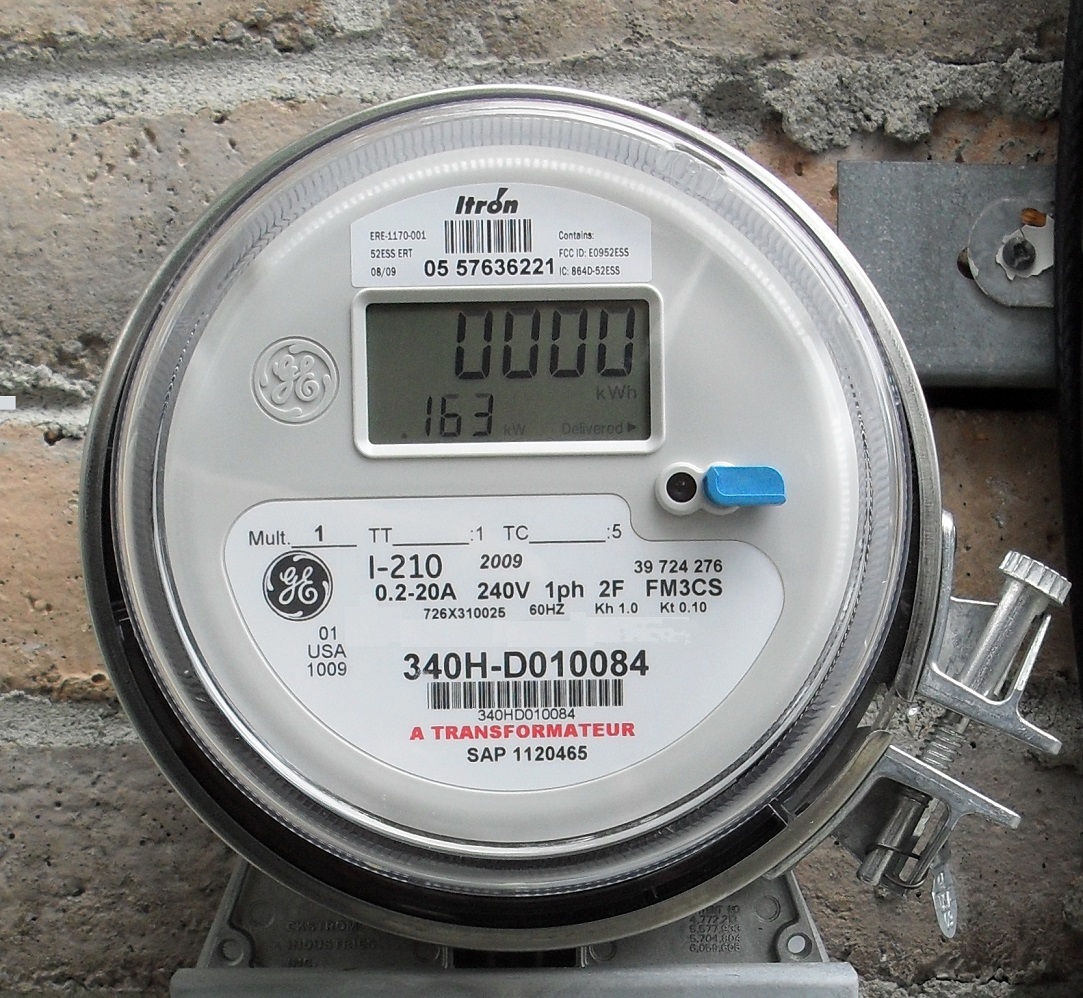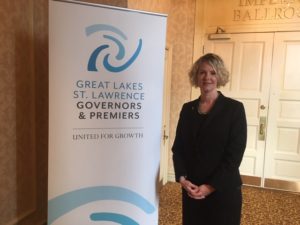
In part two of our series, we look at the existing energy situation in the Upper Peninsula. Who are the major utility companies providing energy, why are rates so expensive and what demographic and infrastructure problems make affordable and accessible energy so difficult for Michiganders in the UP? Read the first part here.
Frustration with high utility rates in the Upper Peninsula, combined with decades-long infrastructure issues and harsher winters like the 2014 and 2109 polar vortexes, motivated Gov. Gretchen Whitmer to sign an executive order establishing an UP Energy Task Force.
The mission of the task force is to assess the peninsula’s energy needs and what alternatives there are to Line 5 should it be shut down, given the concerns of a potential oil spill in the Great Lakes via the pipeline’s underwater portion below the Straits of Mackinac.
“The idea is for the task force to receive information kinda on all possible directions,” said Liesl Clark, director of EGLE and one of the 18 members of the task force. Since its formation in June, the task force has met a handful of times, hearing presentations from various experts looking at both the current state of energy needs in the UP and potential alternatives that can be enacted in the short and long term.
Demographic challenge
One of the first presentations the task force heard came from Michigan Technological University, headed up by associate professor of sociology and demography Richelle Winkler.
Winkler’s presentation illustrates a cocktail of issues that frustrates plans to meet the UP’s energy needs:
- The peninsula has one of the lowest population densities in the contiguous United States despite most UP residents residing in large cities.
- It has an aging population, older on average compared to the rest of the country or even to the Lower Peninsula.
- That aging population is expected to double over the next 20 years, requiring more energy to support them.
That’s before addressing the lopsided housing situation.
“One of the big challenges with providing energy in the UP is what I’ll call the seasonal population. These are all the houses that are recreational or part-time use… 22 percent of housing units across the UP are these seasonal units. In some counties it’s more than 50 percent,” Winkler said.

Richelle L. Winkler, Associate Professor of Sociology and Demography
Michigan Technological University, Photo by census.gov
“Those seasonal units tend to be much more spread out along the coastlines, on more dirt roads, in the forests. They’re harder to access.”
For full-time residents, the housing situation isn’t much better. Winkler noted that much of the housing, especially in the western UP, tends to be old and inefficient because it was built before 1950 or even before the 1920s.
These older homes struggle to retain heat during the wintertime and winter-proofing these homes can be an expensive endeavor. For those dependent on heating with electric, high utility rates that shoot up during winter constrain low-income households, which make up about 38 percent of all households in the UP. Houses that heat with a mix of fuels such as natural gas and electric can still struggle economically and see natural gas shut-offs if payments are missed.
“That becomes an issue for what we talk about as ‘energy poverty,’” Winkler said. “Incomes are relatively low across the UP so it’s like that mix of old housing stock that’s inefficient, high rates for electricity, people relying on a mix of fuels, elderly population and low income, all of that added together really creates some challenges just for peoples’ wellbeing.”
Utility companies and their role in high prices
The utility companies don’t help the situation.
The Lower Peninsula has a mix of investor-owned utilities like DTE and municipal utilities and co-ops.

Liesl Eichler Clark, Director of the Michigan Department of Environment, Great Lakes, and Energy, Photo by Gary Wilson
Clark estimates around 11 different utility companies operate in the UP, with several of them being locally-owned municipal utilities for the city of Marquette or the villages of L’Anse, Baraga and Escanaba. There are a few rural electric co-ops that serve fairly small populations across counties, but the largest utility companies in terms of population and territory served are the Cloverland Co-Op covering the eastern UP and the Upper Peninsula Power Company or UPPCO, the largest utility monopoly serving most of the central UP and extending into the western counties.
When people talk about the staggeringly high electric rates in the Upper Peninsula, most of the time they’re complaining about UPPCO. For Elise Matz, a prior resident of the Keweenaw Peninsula and former Democratic staffer for state senator Gary Peters, UPPCO has become the central focus of a series of articles she has written about the utility’s ownership and how it ties into the high rates it charges.
“It’s always going to be problematic of an investor-owned facility as far as being able to provide affordable service to its customers and return a reasonable profit for its investors,” Matz said.
Early this year, Attorney General Dana Nessel successfully reined in UPPCO’s initial plan to raise its annual rates by $10 million with an application the utility filed with the Michigan Public Services Commission in September 2018. Part of Nessel’s argument against the rate increases were the already exorbitant prices UP customers were paying, with the interested parties settling for a $1.8 million dollar annual rate increase.

Dana Nessel with Sean McBrearty at a September press conference in Lansing, Photo by Jim Malewitz via Bridge Magazine
Considering that the UP’s total population is just north of 300,000, barely three percent of Michigan’s total, UPPCO would be struggling regardless to return a profit if it was the only utility operating there. Since it must compete with existing co-operatives and municipal utilities in a widespread, mostly rural area, UPPCO has continually struggled to remain a profitable venture.
And this is where Matz’s exploration of UPPCO’s holding company, the Upper Peninsula Power Holding Company, or UPPHCO, becomes relevant.
The details of UPPCO and UPPHCO’s finances can be read here, but to summarize: in 2014, the Michigan Public Services Commission approved the sale of UPPCO from Integrys Energy Group to UPPHCO, a holding company set up by Balfour Beatty Infrastructure Partners, a London-based investment firm.
Holding companies are common in the utilities industry. DTE and Consumers Energy, for example, are two of the largest holding companies in Michigan’s Lower Peninsula. But unlike UPPHCO, both DTE and Consumers are publicly traded, meaning their finances must be disclosed to the Securities and Exchange Commission.
It is the private-sector nature of UPPHCO that allowed the company, via a mix of complicated accounting practices, to create a more favorable corporate tax situation while significantly increasing the fragility and held debt of UPPCO.
Robert Benninghoff, a financial analyst who drew up a report on UPPCO’s finances and ownership, estimates that “financial engineering may have allowed UPPHCO, the holding company, to invest as little as $34 million of equity and carry $200 million in debt.”
Matz hopes that her interview with Benninghoff illustrates how UPPHCO’s private-sector status is designed to extract as much profit as possible from UPPCO and how this translates into high prices and continual rate increases for UP customers.
“It’s important for us to remember in this conversation that we created investor-owned utilities to serve us, they do not have a God-given right to earn a profit for their shareholders by providing an essential service to Michiganders,” Matz said.
“That may sound radical to some folks,” she added, “but I think as we look at this as difficult as it is, this system that we’ve created isn’t serving us anymore, perhaps it’s time to revisit the contract.”
Featured Image: Solid state digital electric meter, Photo by Kristoferb via wikimedia cc 3.0
Read more stories from the Upper Peninsula’s energy situation series


1 Comment
-
Great article but edit needed: spelling of L’Anse and Baraga, glaring mistakes for a Yooper’s eyes. Looks like a Google translation. Found in third paragraph in “Utilities and their role in high prices” section.




